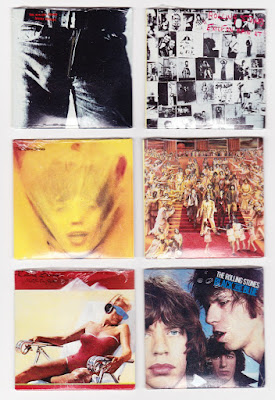I'n not to sure how "Limited" these limited editions are, but it seems they're beginning to disappear already, even commanding higher than retail prices from some sources . The releases also take the form of a boxed set, but these are apparently "promo" pieces. and spendy. At roughly $25-$30 a cd, a full set would run around, let's say $150. However, all 6 mini-L.P.'s, with the box, will set you back to the tune of $230-$250. That's one spendy cardboard box. Other boxes are available as well. I've come across two variations of a Vincibus Eruptum box, as well as an Outside Inside variation, leading one to believe that the boxes are available separately with a "carrying case" type purpose in their own right.
In that respect, it's fairly difficult to tell whether they are in fact "promo's" or their own product. Either way, $$$.
 |
| One varient of the "Vincibus Eruptum" box |
In that respect, it's fairly difficult to tell whether they are in fact "promo's" or their own product. Either way, $$$.
If you're not familiar with SMH cd's the abbreviation stands for "super high material", meaning that it's an improved compact disc product with the greatest change being a polycarbonate material that allows more precise physical representation of stored bits during pressing, and less laser scattering during reading. These improvements aim to facilitate playback by producing fewer errors and, potentially, better sound quality. SMH-CD's are played through regular CD players.
 |
| Outside Inside "pill-box" |
The Japanese mini L.P. has quite a following of it's own. These miniature paper/cardboard clad releases do a pretty good job a recreating old records. I've even come across a few blogs devoted solely to the mini-L.P. scene. Maybe you knew that already. I didn't. I am also not in any big hurry to replace all my "standard" sized record either. I'll be sticking to the actual L.P. as my primary medium. But these are really cool.
I'm reminded of "Chu Bops", those mini L.P's of the 1980's that contained little bubble gum "records"? You can still find lots of them for sale on ebay. (I wouldn't recommend eating them) However I didn't buy many of them when I was a kid. Seems they never had any mini Iron Maiden or Alice Cooper records. Woe is me.
 |
| A set of Rolling Stones "Chu Bops." I wonder how long it will be before I start adding these to my collection. |











